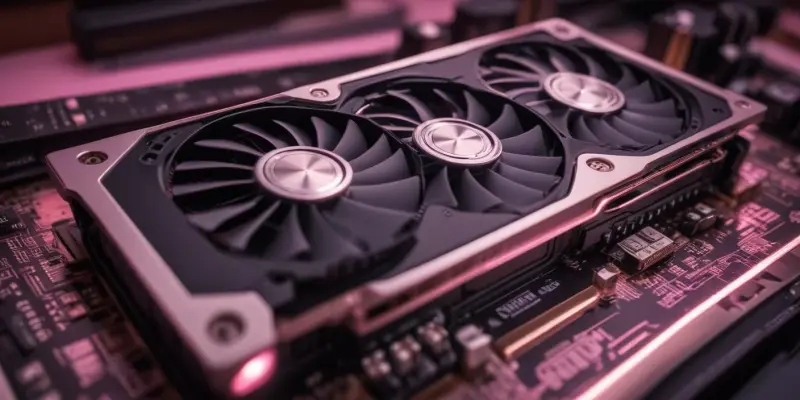Nvidia has officially launched the much-anticipated RTX 5060 Ti graphics card, setting its eyes on capturing the mid-range GPU market. The launch comes amid mounting concerns over the card’s availability and industry-wide price adjustments. The previous generation’s issues with inflated prices, stock shortages, and broader supply chain disruptions have cast a long shadow over the release of the RTX 5060 Ti, making its market introduction particularly noteworthy. Despite these challenges, Nvidia is hopeful that the RTX 5060 Ti will meet the expectations of gamers and tech enthusiasts alike, given its upgraded architecture and performance features. The RTX 5060 Ti comes in two models: the 8GB version, priced at $379 / £349 (around AU$595), and the 16GB variant, set at $429 / £399 (around AU$675). This marks a significant price reduction when compared to the RTX 4060 Ti, its predecessor. Additionally, Nvidia plans to roll out a non-Ti version of the RTX 5060 at $299, expected to be released in May along with a series of RTX 5060 laptops. The strategic price cuts are seen as a direct attempt to make these advanced GPUs more accessible to a broader demographic, particularly those with budget constraints.
Anticipated Supply Concerns
While the lower price tags are enticing, the looming issue of potential supply shortages cannot be ignored. Nvidia’s past releases have been affected by inflated prices and low stock levels, with the same concerns now surrounding the RTX 5060 Ti. The late-out-of-the-gate announcement coupled with what appears to be a decelerated launch strategy seems to indicate that Nvidia is preparing for potential supply constraints and the resultant consumer dissatisfaction. This subdued approach could be a deliberate strategy aimed at managing expectations and avoiding the kind of backlash that has marred previous launches.
The GPU market, in general, has been navigating tumultuous waters, with disruptions in manufacturing and logistics impacting availability. These factors have had a ripple effect on various product launches within the RTX 5000 series and are expected to have a similar impact on the RTX 5060 Ti. Consumers eager to get their hands on the new GPU might face challenges finding one in stock, potentially leading to frustration or the necessity to explore alternative options.
Additionally, there is a broader industry dilemma regarding the upgrade costs associated with newer technologies. The RTX 5060 Ti’s improved features, driven by the latest Blackwell GPU architecture, come alongside the transition to PCIe 5.0. This shift might impose an additional financial burden on users looking to upgrade their systems, a concern colloquially referred to as the “motherboard tax.”
Performance Enhancements and Market Impact
Despite these challenges, Nvidia has equipped the RTX 5060 Ti with substantial enhancements. The Blackwell GPU architecture promises increased performance capabilities and support for DLSS 4, which aims to improve frame rates and visual fidelity, especially useful for modern demanding PC games. These advancements are likely to appeal to budget-conscious gamers who have been grappling with performance limitations in recent titles. The RTX 5060 Ti attempts to bridge the gap between high-end performance and affordability, presenting a viable option for users desiring robust gaming experiences without breaking the bank.
Nvidia’s competitive pricing strategy and feature-rich offerings suggest an intent to garner a significant share of the mid-range GPU market. However, the success of these efforts will largely depend on the company’s ability to navigate the supply chain challenges effectively. Retailers and consumers must stay vigilant for availability updates, price adjustments, and potential deals as the market adjusts to the new entrant. Another aspect adding complexity to the RTX 5060 Ti’s market reception is competition. AMD remains a formidable competitor with its RX 9060 XT, which also promises impressive performance metrics at competitive price points. Consumers might find themselves evaluating both options closely, especially if availability issues persist with the RTX 5060 Ti. In such a scenario, the overall market dynamics could tilt based on which company manages supply more effectively.
Conclusion: Strategic Considerations
Nvidia has officially unveiled the RTX 5060 Ti graphics card, aiming to dominate the mid-range GPU market. This launch arrives amid concerns about the card’s availability and industry-wide price shifts. Problems such as inflated prices, stock shortages, and supply chain disruptions that plagued the previous generation have cast a shadow over the RTX 5060 Ti’s introduction, making this release particularly significant. Nonetheless, Nvidia is optimistic that the RTX 5060 Ti will meet the high expectations of gamers and tech enthusiasts due to its enhanced architecture and performance features.
The RTX 5060 Ti comes in two models: an 8GB version priced at $379 / £349 (around AU$595) and a 16GB version at $429 / £399 (around AU$675). This reflects a notable price drop from its predecessor, the RTX 4060 Ti. Additionally, Nvidia is planning to release a non-Ti version of the RTX 5060 at $299, expected in May, along with a series of RTX 5060 laptops. These strategic price cuts are aimed at making advanced GPUs more affordable and accessible to a broader audience, targeting those with limited budgets.

